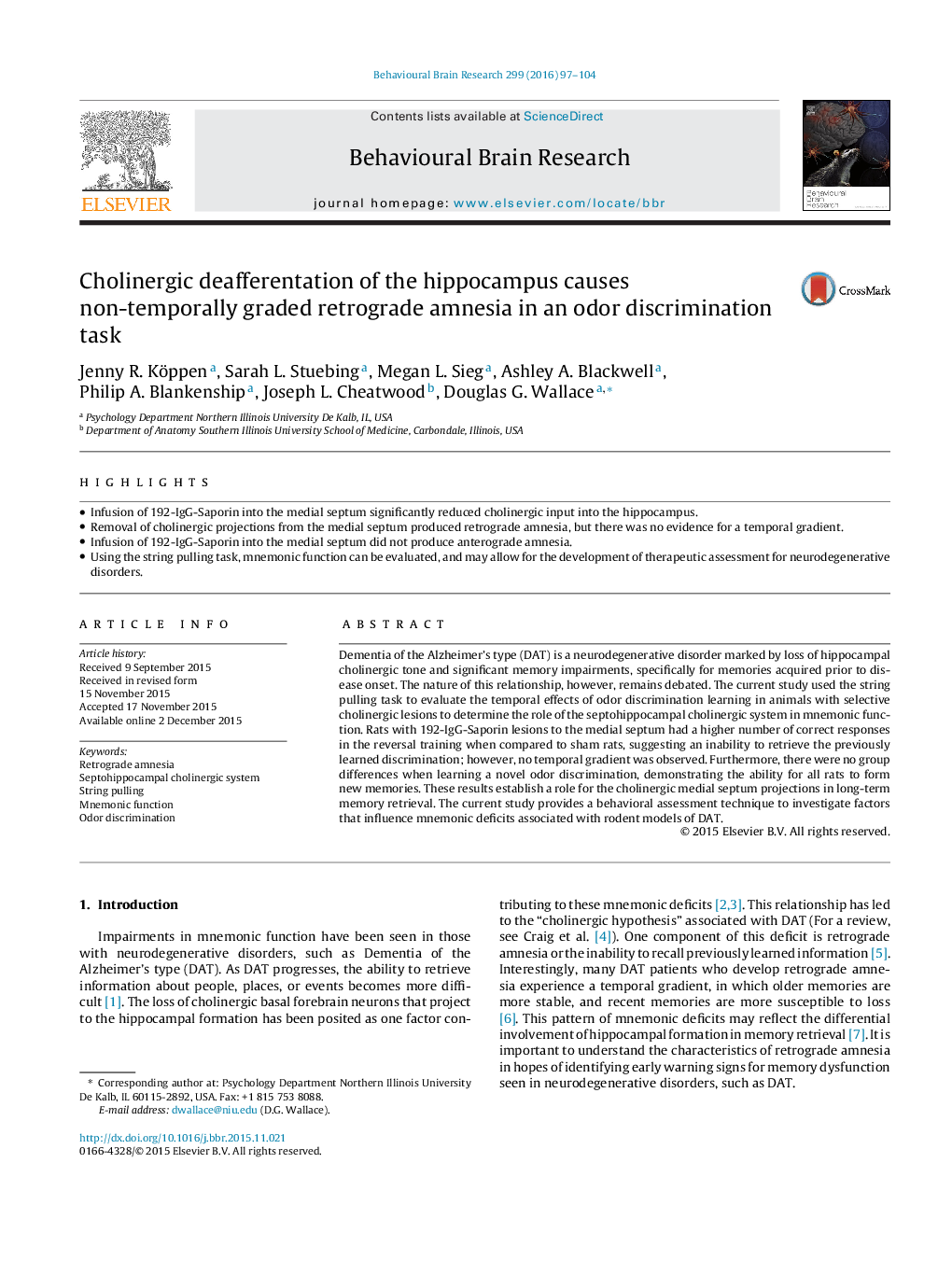| Article ID | Journal | Published Year | Pages | File Type |
|---|---|---|---|---|
| 6256232 | Behavioural Brain Research | 2016 | 8 Pages |
â¢Infusion of 192-IgG-Saporin into the medial septum significantly reduced cholinergic input into the hippocampus.â¢Removal of cholinergic projections from the medial septum produced retrograde amnesia, but there was no evidence for a temporal gradient.â¢Infusion of 192-IgG-Saporin into the medial septum did not produce anterograde amnesia.â¢Using the string pulling task, mnemonic function can be evaluated, and may allow for the development of therapeutic assessment for neurodegenerative disorders.
Dementia of the Alzheimer's type (DAT) is a neurodegenerative disorder marked by loss of hippocampal cholinergic tone and significant memory impairments, specifically for memories acquired prior to disease onset. The nature of this relationship, however, remains debated. The current study used the string pulling task to evaluate the temporal effects of odor discrimination learning in animals with selective cholinergic lesions to determine the role of the septohippocampal cholinergic system in mnemonic function. Rats with 192-IgG-Saporin lesions to the medial septum had a higher number of correct responses in the reversal training when compared to sham rats, suggesting an inability to retrieve the previously learned discrimination; however, no temporal gradient was observed. Furthermore, there were no group differences when learning a novel odor discrimination, demonstrating the ability for all rats to form new memories. These results establish a role for the cholinergic medial septum projections in long-term memory retrieval. The current study provides a behavioral assessment technique to investigate factors that influence mnemonic deficits associated with rodent models of DAT.
